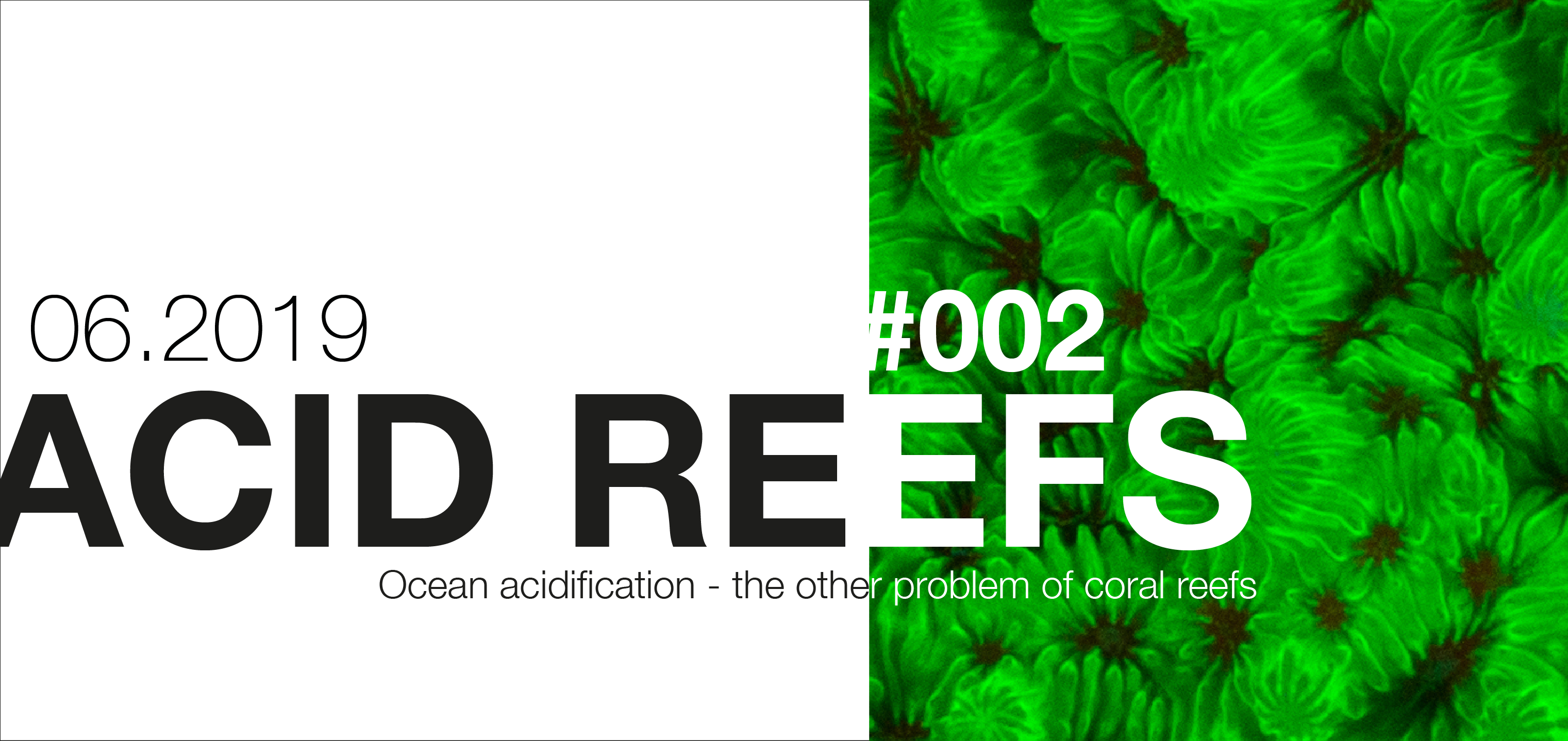
OCEAN ACIDIFICATION – THE OTHER PROBLEM OF CORAL REEFS !
The future of coral reefs in the Anthropocene era is now threatened by the billions of tons of carbon dioxide emitted into the atmosphere. Ocean acidification (OA) is thus, after global warming, the other problem that coral reefs will have to face.
The overall objective of ACID REEFS is to better understand the response of coral reefs to ocean acidification through an integrated approach. ACID REEFS is lead by Dr. Laetitia Hédouin (CNRS) from the Center for Island Research and Environment Observatory in Moorea.

What are coral reefs?
Coral reefs are vast underwater ecosystems. Their core is composed of a solid carbonate structure made of the skeletons secreted by corals during the past 5-10 thousands of years. These skeletons are imbricated with what we call « living stones » that are rocks hosting micro- and macro- fauna essential for the health of the coral reef ecology. In addition, coral reefs are composed by the entire benthic biodiversity hosted by these living labyrinths. This biodiversity includes vertebrates such as fishes and turtles, invertebrates such as corals, nudibranchs and sea stars as well as plants such as the encrusting coralline algae. All these organisms are tightly interconnected and essential for the maintenance not only of an healthy coral reef ecology but also for the entire Ocean. One kilometer of tropical Coral Reef can contain more marine species than the entire European littoral altogether.
What species from the coral reef are studied in ACID REEFS ?
Corals | Pocillopora damicornis, Pocillopora verrucosa, Porites lobate, Acropora hyacinthus, Acropora nasuta.
While in Moorea, the coral reef seems is relatively resistant and resilient compare to others reefs around the world, its response to global and local change stressors are negatively affecting the diversity of coral species building those reefs, with a shift of dominance from Acropora to Pocillopora nowadays. Within ACID REEFS, 5 different coral species with complementary biological features are studied;
1) Pocillopora damicornis is a “coral laboratory rat model” coral with highly variable morphology and a broad biogeographic range. They are fast growing and host a huge variety of animals such as crabs and shrimps. They are brooder corals, meaning that they release on a monthly basis hundreds of planula, ready to settle on the reef.
2) Pocillopora verrucosa is called the “cauliflower corals”, fast-growing and resistant species in French Polynesia, this species dominates Polynesian reef landscape.
3) Porites lobata is a massive species, slow growing species but resistant to temperature anomalies. This species is gonochoric and colonies released either eggs or sperm at the full moon.
4) Acropora hyacinthus is a plating corals with small branches, hermaphrodite it releases eggs and sperm few days after the full moon of October and november. Fast growing species, this is also an extremely sensitive species during bleaching event with 90% of mortality recorded in 2019 at 6m depth.
5) Acropora nasuta is a branching species, hermaphrodite it releases eggs and sperm few days after the full moon of October and november. As A. hyacinthus, this is a fast growing species, that was less impacted by the 2019 bleaching event in Moorea, and thus more resistant.
Coralline algae | Porolithon onkodes, Lithophyllum insipidum, Paragoniolithum conicum, Neogoniolithon foslei, Titanoderma prototypum.
Encrusting and rock like, these algae are hard because of calcareous deposits contained within the cell walls. All over the world, they are helping building the coral reef and play an important ecological role on it as some invertebrate species such as sea urchin and parrots fish feed on them. They are mainly pink or reddish but can be also found in many colors.
Fish | Acanthurus triostegus – Manini, “convict” tangs or surgeonfishes because of its black and white stripes, which resemble convicts striped clothing. Manini live in school of fishes in the Indo-Pacific Ocean. They are herbivorous, which play a crucial role in coral reef ecosystems maintenance by keeping algal growth in check. They prevent fast growing seaweeds from choking out more slowly growing corals.
The research project
ACID REEFS aims to study the effects of ocean acidification (OA) on reefs, studying both the impacts at the level of those key local organisms of reefs, corals, coralline algae, fish, but also at the level of the ecosystem, including human-nature relationships. To assess the response of coral reefs to OA, it is essential to understand how corals and associated key component of the reefs, respond to OA. Despite the responses of tropical reef organisms to OA have been extensively studied, sensitivity varies widely from species to species, highlighting the need to avoid extrapolation from one to another to gain an accurate understanding of the responses of the coral community. One of the first objectives, therefore, was to assess the response of Mo’orea reefs to OA throughout the ACID REEFS project.


